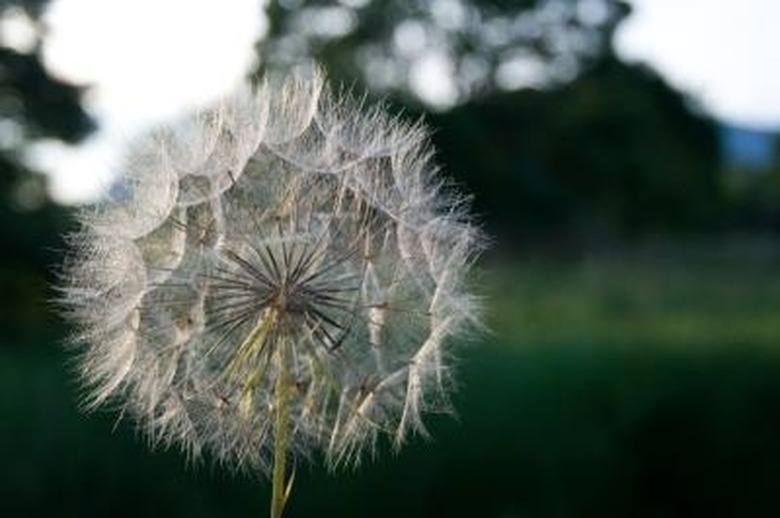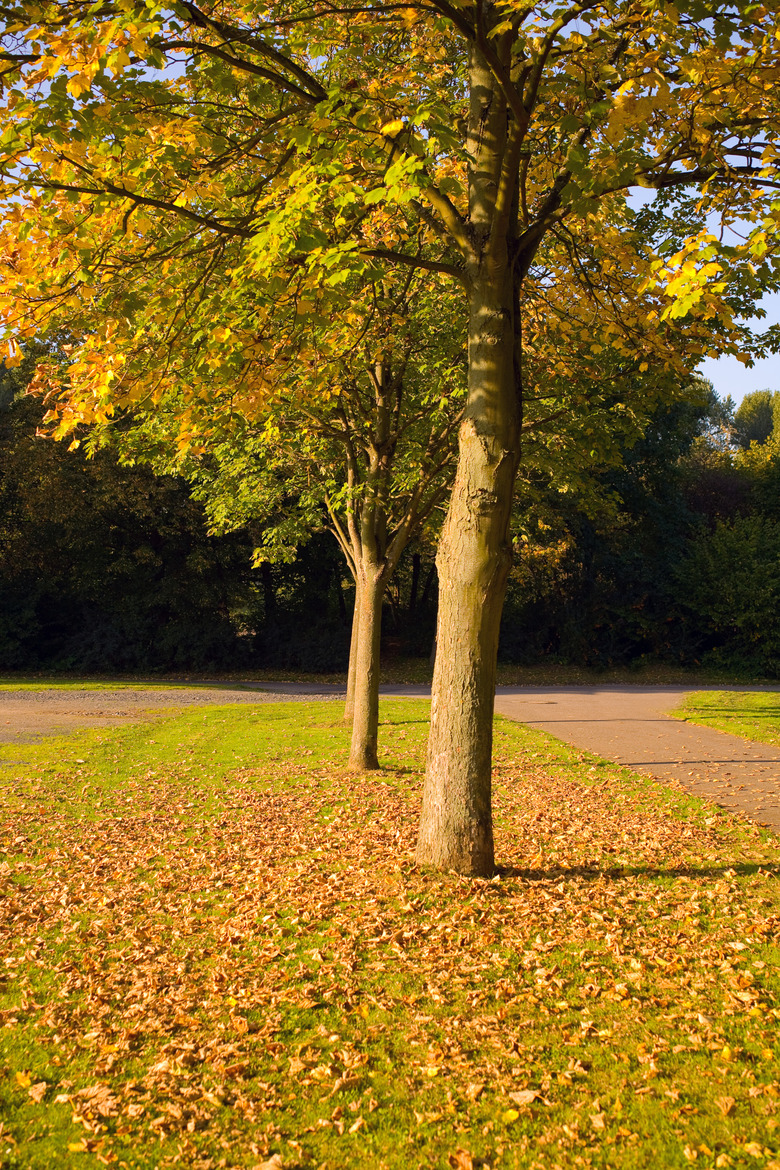Homemade Weed Killers
Step 1
There are several different ways to kill weeds once they have emerged among your grass and plants. Some of these methods can actually harm the grass and plants. It is much better to stop the weeds before they even have a chance to grow. You can do this using a simple home remedy. This remedy is safe to use around children and pets, and won't cost you that much to implement.
Step 1
Circle March 15 and August 15 on your calendar. According to Pesticide.org, these are the best dates to apply your corn gluten meal.
- There are several different ways to kill weeds once they have emerged among your grass and plants.
Step 2
Put on a pair of garden gloves and prepare to go to work.
Step 3
Sprinkle the corn gluten meal at a rate of 12 to 20 lbs. for every 1,000 square feet of lawn you want to cover.
Step 4
Rake your yard so that the corn gluten meal is mixed in with the top 1/4 inch of the soil.
Step 5
Soak your lawn with the water from your garden hose as soon as you are done raking. Then let it completely dry out before watering again. This causes even more stress to the weeds.
- Put on a pair of garden gloves and prepare to go to work.
- Soak your lawn with the water from your garden hose as soon as you are done raking.
Tip
Corn gluten meal will not burn your lawn. If you sprinkle a little too much of it your lawn will still be okay.
Step 1
Mix 2 tablespoons of liquid detergent in one gallon of water. Scientists at New Mexico State University suggest using Ivory Liquid dishwashing detergent. If you prefer using a certified organic soap, try Dr. Bronner's peppermint or Castile liquid soap at the same dilution rate.
Step 2
Add the mixture to the spray bottle and shake it until it is completely combined.
Step 3
Spray the plant with the soap completely. In order for the insecticide to be effective, all infested parts of the vegetable plant must be hit with it.
Step 4
Wait three hours and then wash the insect spray off the plants with a garden hose.
- Mix 2 tablespoons of liquid detergent in one gallon of water.
- Wait three hours and then wash the insect spray off the plants with a garden hose.
Tip
Trade names are not intended as an endorsement.
Kinetin, part of a group of plant growth hormones known as cytokinins, appears to be safe to use on vegetables and in fact is being sold as a fertilizer/hormonal supplement under various brand names.
Step 1
Fill a stock pot full of water. Bring the water to a rolling boil. Carry the boiling pot of water outdoors and pour it over weeds to boil them to death.
Step 2
Bring one gallon of white vinegar to a boil. Add one cup of salt to the vinegar, and stir until it is dissolved. Remove from the heat and mix in one tbsp. of dish soap. When the solution has cooled, pour it into a spray bottle. Spray it directly on weeds to kill them, but avoid soil. The sodium in this recipe is too diluted to harm the soil, but over time it can build up. Sodium build-up can prevent plants from growing in the soil and can harm microbes.
- Kinetin, part of a group of plant growth hormones known as cytokinins, appears to be safe to use on vegetables and in fact is being sold as a fertilizer/hormonal supplement under various brand names.
- The sodium in this recipe is too diluted to harm the soil, but over time it can build up.
Step 3
Cover weeds with a pad of 10 sheets of newspaper. Water the paper to weigh it down. The paper will block light and air from reaching the weeds and will smother them.
Tip
Corn gluten, such as the kind found in corn meal, can be spread over your lawn to act as a pre-emergent herbicide. This will prevent weed seeds from sprouting in your lawn. Apply corn gluten to the lawn four to six weeks before weed seeds can germinate.
Step 1
Cut the weed as close to the roots as possible.
Step 2
Pour two cups of white vinegar into an empty spray bottle, and mix in a half cup of warm water.
Step 3
Mix in one to two tbsp. of dishwashing liquid into the spray bottle, and secure the top of the bottle to prevent spillage.
Step 4
- Cover weeds with a pad of 10 sheets of newspaper.
- of dishwashing liquid into the spray bottle, and secure the top of the bottle to prevent spillage.
Step 5
Shake the solution, then spray the solution directly onto the weeds. Avoid spraying onto the lawn, as the vinegar can damage the lawn, according to Earth Easy.
Step 1
Step 1
Apply a weed killer that is selective. This will target the specific weed you want to abolish.
Step 2
Aim the sprayer nozzle at the weed. Keep it from hitting the base of the tree or other nontarget plants. Depress the trigger and spray. Be mindful where the mist falls.
Step 3
- Shake the solution, then spray the solution directly onto the weeds.
- Aim the sprayer nozzle at the weed.
Step 4
Spray weed killer on still days. If you apply the chemicals on windy days, the mist will travel to the trees nearby, causing injury.
Step 5
Pick mild days to use weed killers around trees. Many herbicides turn into a gas when it is too warm outside. The chemical will travel through the air and damage a nontarget tree. Apply weed killers when it is below 85 degrees Fahrenheit.
Step 6
Apply 1 to 2 lbs. of activated charcoal per 100 square feet of grass to inactivate weed killers that affect tree roots. This will absorb the chemical herbicide. Work the charcoal into the top 6 inches of soil.
Step 7
- Spray weed killer on still days.
- of activated charcoal per 100 square feet of grass to inactivate weed killers that affect tree roots.
Step 1
Fill the spray bottle with white vinegar. Do not dilute.
Step 2
Add a few drops of liquid dish soap to the vinegar. Shake well.
Step 3
Spray the vinegar directly onto each weed.
Step 4
Take care not to spray any surrounding plants or grasses, as the vinegar will kill those also. The weeds will die in one day.
- Fill the spray bottle with white vinegar.
Step 5
Repeat the vinegar application to weeds that are resistant.
Most weed killers are considered safe if applied according to directions and pets are kept away from the area until the treatment dries completely or is watered in. Non-toxic biodegradable options are available.
Bayer has six different weed-killing products at your disposal. Most of these weed-killers are for seasonal purposes, since most weeds grow during the spring and summer time. However, you can use Bayer All-In-One Lawn Weed & Crabgrass Killer for winter weeds. Apply it on any weed, any time.
- Repeat the vinegar application to weeds that are resistant.
- However, you can use Bayer All-In-One Lawn Weed & Crabgrass Killer for winter weeds.
Apply weed and feed pre-emergent type weed killers in the spring to prevent crabgrass and other germinating weeds. Apply post-emergent type weed killers in the fall to kill actively growing weeds.
Food and Photosynthesis
Adding sugar to the soil can inhibit the plant's ability to produce its own food. Other biological processes become inhibited as energy is wasted in the additional processing of sugar.
Soil
Sugar added to fertilizer can influence the pH levels within the soil. Plants that are sensitive to a change in pH levels will be unable to absorb nutrients from the soil. The deficiency in nutrients will lead to stunted growth, inhibited reproduction and increased susceptibility to fungal disease. Sugar decomposing within the soil can also lead to increased bacterial rates which may later infect plants.
- Apply weed and feed pre-emergent type weed killers in the spring to prevent crabgrass and other germinating weeds.
- Sugar decomposing within the soil can also lead to increased bacterial rates which may later infect plants.
Care
Instead of giving plants sugar, gardeners will experience increased growth by feeding plants a balance of macro-nutrients. This is best done by choosing the appropriate fertilizer for the growth of your specific plant. Healthy care of plants will help fight off pest and disease threats.
Microorganisms
It is possible for sugar to stimulate the growth and production of microorganisms within the soil of the plant. Overstimulation of microorganisms at the roots can stress a plant and disrupt the absorption of nutrients.
Claims
Gardeners often claim the benefits of sugar added to soil. Although certain plants might have some positive reactions, there is no scientific research to back up these claims.
- Instead of giving plants sugar, gardeners will experience increased growth by feeding plants a balance of macro-nutrients.
- It is possible for sugar to stimulate the growth and production of microorganisms within the soil of the plant.
Sugar water does not kill garden plants. In fact, spraying plants with water-sugar concentration helps them thrive and protects against pests, provided the dose does not contain too much sugar.
Step 1
Sugar accelerates activity levels when it is ingested. When the microbes in soil are treated to an excess of sugar, they temporarily over-indulge and the soil they inhabit becomes unusable for a short while. To benefit from this process, spread raw sugar around the base of a weed or small areas of weeds that you want to kill. Allow three to five days before planting in the area (particularly after two to three waterings).
Step 2
Add chili pepper to the sugar mixture if you are concerned about attracting unwanted insects or other visitors. The chili pepper will deter most pests.
- Sugar water does not kill garden plants.
- When the microbes in soil are treated to an excess of sugar, they temporarily over-indulge and the soil they inhabit becomes unusable for a short while.
Step 3
Add corn meal to your soil once the weeds are dead. Corn meal has a pre-emergent chemical that prevents new weed seeds from emerging.
Tip
Use boiled hot water on weeds in sidewalks, brick cracks or hard to reach areas. Be aware that hot water will kill or cook all types of plants–both weeds and those you may want to keep.
Things Needed
- Sugar
- Chili pepper (optional)
- Corn meal (optional)


